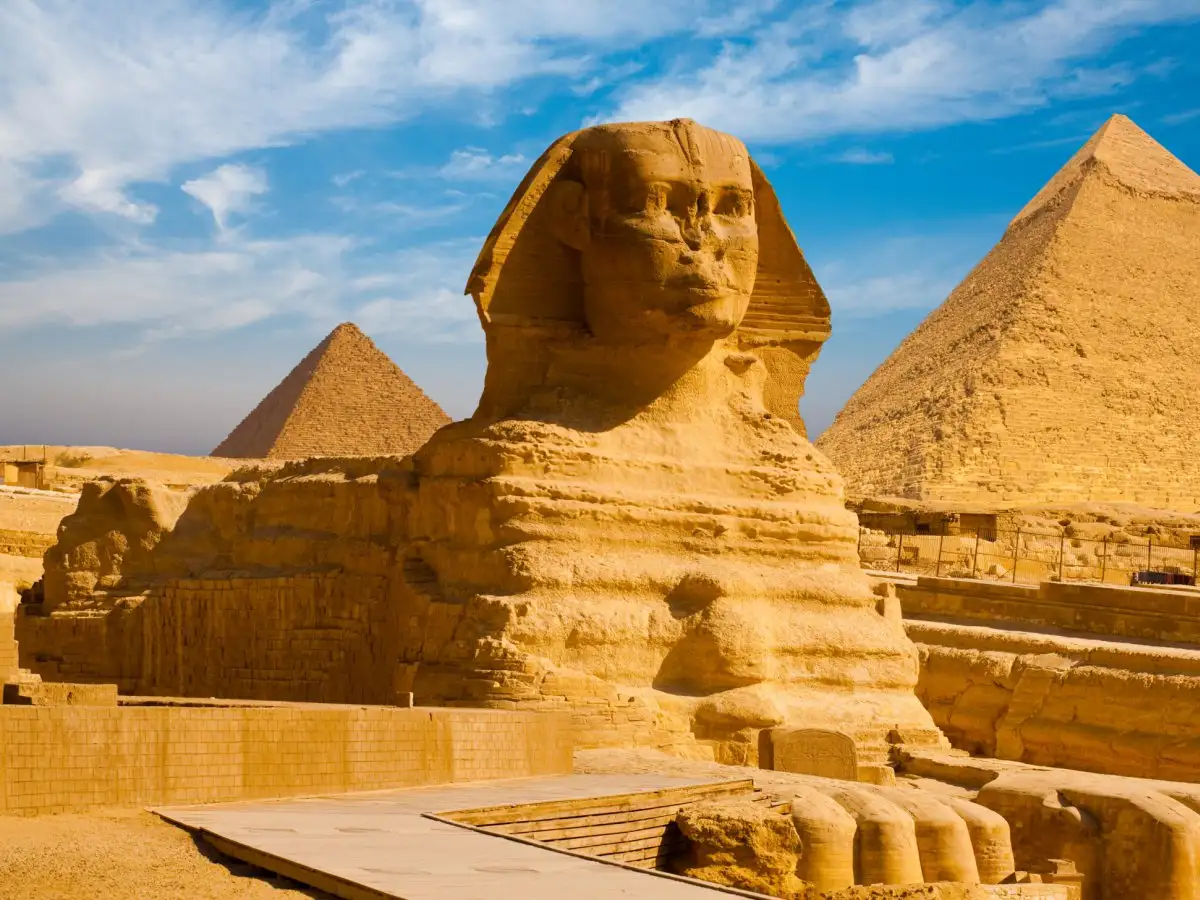Emblematic of Egyptian civilization, the Great Sphinx statue was already considered ancient by most Egyptians during their 3,000-year history. It is widely believed that the Pharaoh Khafre (or Chephren) had the image constructed to guard his temple. Dating back to the Old Kingdom, the statue was likely built around 2500 BCE.
Situated northeast of Khafre’s valley temple, amid the many pyramids of the Giza plateau, it sits in an ancient quarry. The Great Sphinx statue faces due east and is thought to be emblematic of the sun god and thus, the pharaoh himself.
Likely carved as a warning to potential grave robbers, the Great Sphinx statue depicts a half-lion and half-human with the wings of an eagle. It is not known whether the statue was planned or was an afterthought after construction of the larger temple. A small temple between the paws was added 1,000 years later during the New Kingdom during the time of Thutmose IV. There is a myth about the prince Thutmose and the Sphinx.
The Great Sphinx’s name comes from Grecian legends that tell of a demon sent from Ethiopia by either Hera or Ares to Thebes. Depicted as a woman in Greece the name “sphinx” means “the strangler.” Serving as a destructive agent of the gods she asked the riddle, “What walks on four legs in the morning, two during the day and three at twilight?” When the mythical Oedipus solved the riddle as part of his divine test, the sphinx killed herself. However, no such story is known to have existed in Egypt until the third century BCE.
Unlike later Greek and Indian counterparts, Giza’s Great Sphinx statue is depicted in repose, with the royal cobra (or uraeus) and headdress. It is possible the double crown of the newly united Egypt was worn. Over 60m (200 ft.) in length and 20m (65 ft.) tall, it is among the first sphinxes created. It was copied all over Egypt for over 2,500 years, sometimes with the ram’s head representative of the god Amun or that of the royal hawk.
Carved from a very large knoll of limestone, the Giza Great Sphinx statue is large enough to encompass several strata of limestone, each with different characteristics. The body is quite soft, with hard and brittle feet, while the face is much harder and able to withstand the elements. As such, the body of the statuary is very badly eroded, with large chunks of limestone falling off every day when the desert temperature rises.
The Great Sphinx statue would likely not be here today if it had not spent most of the last 4,500 years almost entirely covered in sand — just the very top of the statue sticking out. In fact, it is likely the statue has been buried to the neck for most of the last 4,500 years.
Despite attempts to clear the Great Sphinx of sand as early as 1858, the statue was not cleared to the paws until 1936 when the fissure that runs across the body was filled with cement. Exposed now to the elements and Cairo smog, the deterioration has accelerated despite many attempts to arrest it.
The spirit of conservation is a recent development. Pieces of the beard it once wore were removed by colonial looters and now reside in the British and Cairo Museums. The nose of The Great Sphinx of Giza that we commonly see as a jagged stump may have been broken off by a group of Napoleon’s soldiers using the face for target practice, though some believe sections of the statue to have been missing since at least 1600 AD.

